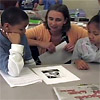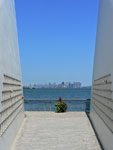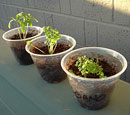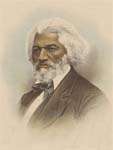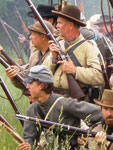Jennifer Orr on Making Technology Work for Primary Students: Part Two

In a recent post I argued the importance of both history and technology in primary grades. I also made the case that both are significant challenges for teachers of young children for a variety of reasons. However, I’m a firm believer that we can do anything we think is important.
Moving to first grade from upper elementary grades meant that I had to think carefully about the technology I used. Some technology carried over quite nicely. I have an interactive whiteboard in my classroom. When we explored timelines we used it to look at one year in a variety of ways and to show timelines from a wonderful, but very small, book. While we record most of our thinking on chart paper we can hang up around the room to reread and refer back to, the interactive whiteboard allows children to manipulate items and ideas. We’ve also used ours to sort images into categories or chronological order.
Another use of technology I continue with in first grade is movie making. Sometimes we use still pictures and sometimes we take video. One example with still pictures is a movie about our responsibilities for school. A large part of the social studies curriculum in the early grades is based around helping students understand their community and their role in it. At our school we have a Home-School Compact for Learning. In order to better understand the students’ responsibilities we created a video with still pictures and with video. I have slowly collected a few digital cameras and a few Flip video cameras. I carry one of each around with me at all times so that I can quickly capture anything that catches my attention during the school day. Other cameras are on lanyards for students to wear around their neck when using them.
First graders in Virginia also learn about the difference between past and present. It is great fun to look at pictures of the past (especially schools, transportation, and daily life) and then send small groups of first graders off with a camera to capture images to contrast with the past. We can then put those into Windows Movie Maker or Photo Story to create a video explaining past and present.
As the year is progressing and my students are gaining literacy skills, I’m introducing them to Wallwisher. This free site allows me to create a wall with a question or topic and my students can add Post-It like items with their thoughts. As they are working around the classroom exploring a topic they can head to our interactive whiteboard to add their thinking. I can also place the wall on our class blog for students to come back to or to add more thoughts. The structure is set for brief writing, which is comforting to young children. It is a great way for us to record our learning and return to it later.
These different options for technology use offer opportunities for presenting information, processing learning, and sharing our thinking. In my next post I’ll explore my favorite, free, online tool in detail.
Read part one of Jennifer Orr's look at technology in early elementary classrooms, and then see what she has to say on other tricky topics in primary-level teaching in her entries on teaching Thanksgiving and Columbus Day.
For an introduction to Web 2.0 tools like those Orr mentions, browse our Tech for Teachers section. Learn about whiteboards, document cameras, digital storytelling software, and other tools.

